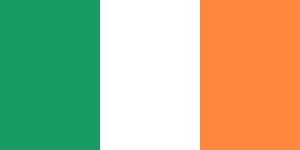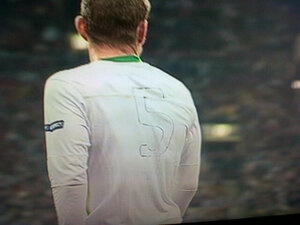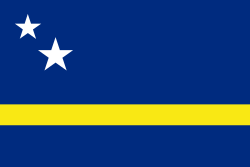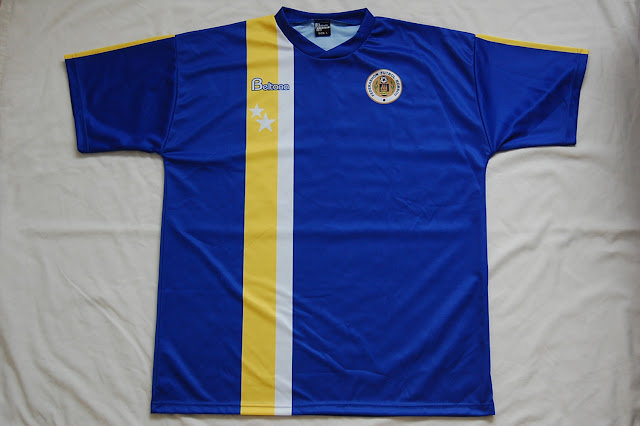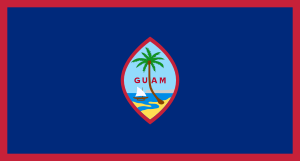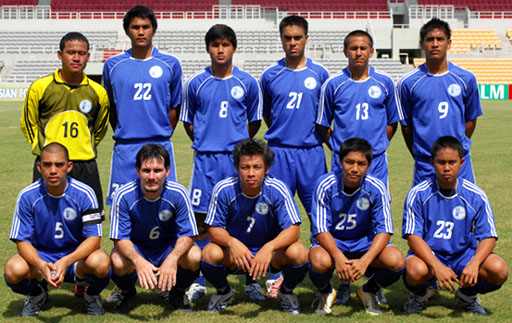Please visit the new home of my collection at
International Football Shirt Collection
A trip around the world, one football shirt at a time.
Tuesday 26 November 2019
Monday 10 August 2015
Latvia
Home 2004/06; Adidas
For a small nation, Latvian shirts are actually quite easy
to come by. I’m not sure why this is the case, whether it is thanks to Adidas
producing their kits or perhaps a well organised merchandising department.
Whatever the reason, a few quick searches and you can get your hands on one.
And therein lay the rub for this collector. I always wanted this particular
version (I’ll explain below) and it was on Classic Football Shirts for ages. So
much so, that I put it off…and put it off, thinking “I can get it any time”.
Predictably, when I eventually went for it, it was gone. So when this popped up
on Ebay a while ago, I decided procrastination couldn’t be a barrier.
So why this shirt? Well for no other reason other than it was
the shirt worn by Latvia when they famously (and surprisingly) qualified for
EURO 2004. For some countries on this quest, any shirt will do. For other
countries, something will draw me to a specific shirt. That finals appearance in
Portugal provided that attraction in this instance.
While it is a nice shirt, it isn’t exactly a design classic. Kit nerds (as if anyone else would be reading
this) will probably notice the slight difference in crests between the match
shirt and replicas. The replica has a white outer band, and green oak branches,
while the match issue shirts had a maroon outer and gold leaves. The crest on
the replica is actually the one that was used on kits up to 2004 (including
warm-up games for the championships themselves). I presume that whatever
teamwear company was supplying the Latvian FA
with Adidas kits (perhaps Adidas supplied directly, but doubtful), foresaw the massive demand that would occur and prepared the replicas
before the slight alteration to the crest was made for the tournament itself.
I’ve also seen one or two replicas with embroidered crests, but the match-issue
shirts were heat pressed just like this (so-too were the previous kits).
Despite their qualification being a surprise, the team did
acquit itself well at the championships, even if they failed to win a game. Two
of their three competitions would reach the semi-finals (Czech Republic and
Netherlands), while the other team was Germany. A tough ask of any nation,
never mind tournament débutantes. Opening against the Czechs, Latvia took a
first half lead, but two Czech goals in the last twenty minutes saw them lose
2-1. Next up was Germany, where Latvia earned
a draw but could have taken all three points. The dominant Dutch proved a game too far, and Latvia collapsed to a 3-0
loss. Still, a famous draw against Germany wasn’t a bad return.
To date, Latvia remain the only European side to reach a
European championships, but not a World Cup. They did come very close though,
pre USSR. Latvia had finished runner-up to Austria during qualification for the
1938 World Cup in France. However, Nazi Germany’s annexation of Austria before
the tournament started led to Austria’s withdrawal. Rather than inviting Latvia
to take Austria’s place, FIFA offered it to England, who hadn’t even entered
qualifying. After England turned it
down, FIFA decided to leave the space empty, preferring to offer Sweden a bye
into the second round. You’d understand it if the Latvians felt a little bit
annoyed.
Tuesday 21 July 2015
Republic of Ireland (4)
Away 2010/12; Umbro
Another Irish shirt to add to the collection. In my mind, and I would assume many more Irish people's minds, this shirt is most associated with Richard Dunne's performance away to Russia in Euro 2012 qualifying. Apart from his fantastic performance that evening, he famously wore a unique version of this shirt. Having clipped his head off the small metal surround of the running track, he returned to the field bloodied, bandaged and without a number on his replacement shirt. This was not good enough for the ref, who proptly told he needed a number. Step forward the quick-thinking goalkeeping coach, Alan Kelly. Marker in hand, he hastily scribbled an impressive '5' on the back and front. 'The Marker Shirt' has entered Irish lore, and you can see the real thing in this collection of matchworn Irish shirts.
That little incident aside, this is another gem from Umbro's 'Tailoerd By' range. The plain white with green cuffs and collar hark back to the late 60s, with the under-arm flashes and subtle pinstripe adding contemporary touch. In terms of the material, the cotton-feel is lovely to wear. Well done Umbro.
I picked this up for less that €10, which was a steal for the much-coveted sponsorless Irish football shirt.
Monday 20 July 2015
Curacao
Beltona, Home; 2014-15
In its current guise, Curacao exists as a full FIFA member
since March 2011. This followed the dissolution of Netherlands Antilles, a
collection of six Caribbean islands of which Curacao was one. Similar to how
Russia is seen as the direct successor of the USSR, Curacao is seen as the
successor to Netherlands Antilles. Therefore, Curacao held on to Netherlands Antilles’
historical records and FIFA place. Despite
such a short history of the present Curacao, teams baring the name of ‘Curacao’
have played games as far back as the 1920s. In the early days, the national
team toured to neighbouring islands to challenge other national sides. In 1934
the then ‘Curacaose Voetbal Bond’ became affiliated with FIFA and in 1941 they
played in the inaugural CCCF (the forerunner to CONCACAF in the Caribbean and Central American region) Championship, where they finished a respectable
3rd of five nations. Despite finding relative success as an
independent team, Curacao agreed to
amalgamation with fellow Netherlands Antilles island Aruba in 1958, to create
the ‘Netherlands Antillean Football Union’ (which also included four other
smaller islands). This union would
remain unchanged until 1986, when Aruba succeeded to go their own way as an independent
team in their own right. The other five islands would remain a union until the
Netherlands Antilles were dissolved as a political union, thereby forcing
Curacao to go it alone in footballing terms the following year.
As mentioned above, Curacao retained the history of N.A. and
their crest remained all but the same. Interestingly, because the political
dissolution in 2010 occurred so close to the beginning of qualifying for the
2010 Caribbean Cup, the Netherlands Antilles actually partook under that name,
the name of a country that no longer legally existed.
Given the historically links with the Netherlands, it is no
surprise that this shirt is made by a Dutch company, namely Beltona. In my opinion, this
shirt is a great example of what can be achieved when a smaller company is used rather than simply applying badges to a template from a global brand. Instead of a generic design, the national flag has been subtly
worked into the shirt. The result is simply a really nice shirt. The only
disappointing element is that the crest and Beltona logo are sublimated rather
than embroidered. However, this is the flip side of not using a 'teamwear' option. Sublimation allows for individual designs to be used as there is less work in the actual stitching together of the shirt. Sometimes you have to make that trade-off.
Sunday 17 May 2015
Germany
Adidas; Home 1994-96
With the smaller nations I always like to write up something of their football history, or the country itself, so as to maybe provide some bit of new information to anyone who might stumble across the blog. With Germany though, I can't see a need for any comment on either their football history or socio-political history given it must be one of the most spoken about nations on the planet. Instead, I'll let this piece from Wikipedia cover their football:
Germany is one of the most successful national teams in international competitions, having won a total of four World Cups (1954, 1974, 1990, 2014) and three European Championships (1972, 1980, 1996). They have also been runners-up three times in the European Championships, four times in the World Cup, and have won a further four third places. East Germany won Olympic Gold in 1976. Germany is the only nation to have won both the men's and women's World Cups. At the end of the 2014 FIFA World Cup, Germany earned the highest Elo rating of any national football team in history, with a record 2200 points. Germany is also the only European nation that has won the FIFA World Cup in South America.
So they're not bad at this football lark.
Turning to this shirt then, and it seems to divide opinion. Search Google for it and you will find a host of "Worst Kits of All Time" coming up with this shirt in them. Though when you look through the comments of these, you'll often find dissenting voices saying they actually like it. It was introduced for USA '94, which was the first appeaence of the reunified Germany at the World Cup. The most striking feature is perhaps the spray paint effect, which was an Adidas theme at the time (Ireland's away shirt at the same tournament also saw the spray, as well as Ghana's 93-95 shirt). The away version of this didn't have the spray paint effect, despite it being the same template in every other respect.
The shirt burrows slightly from its predecessor by keeping the DFB corporate logo on both sides of the collar. Here, the logo is used on both sleeves too. Speaking of sleeves, this shirt uses another Adidas feature of the era: the single-piece front. That is, there is no seem between sleeve and torso on the front. This makes it quite baggy to wear. The shirt is watermarked by the DFB logo. Indeed, the DBF logo is a bit overused on the shirt.
Sunday 26 April 2015
Guam
Goalkeeper 2007; World Soccer Sportswear
To date, all my shirts have purposefully been outfield ones,
but as Guam is a harder shirt to get I was happy with anything. I missed out due
to a lack of funds when Nick managed to import a few Diadora shirts directly
from the Guam FA, so since then I’ve been hoping something would turn up again.
I was especially happy then, when I got the chance to buy a match-issued
shirt. This comes from Christopher Reid,
who was issued the shirt in 2007 while playing for the Guam u16 team. Unfortunately, I don’t have a picture of Reid
in it, but below you can see the Guam senior goalkeeper wearing this shirt design
(albeit in yellow), also in 2007. In the same year,
Reid played some games with the youth team of a pro Japanese club. Having moved
to Australia, he also trained with a pro club there but as yet a major
breakthrough has not happened.
The shirt itself is made by World Soccer Sportswear, but really is just a generic team-wear effort badged up by the Guam FA. The outfield shirt that went with it is an Adidas rip-off, presumably also manufactured under the WSS name. It features mesh panelling on the front which is sewn on above the orange material of the rest of the jersey. This is consistent with the shirt worn by the senior 'keeper. I've tried to show how it rises form the main material in one of the pictures below. I've included a video of Guam's 15-1 loss to Hong Kong in 2007, where
this design can clearly be seen on the 'keeper. He's certainly on screen
enough.
At present, the stand-out name in the Guam senior team for
me personally is that of midfielder Ryan Guy, who have a very impressive stint
in the League of Ireland between 2007 and 2010, before moving ‘home’ to the
MLS. I say ‘home’, because at the time he was “the American, Ryan Guy”.
However, in 2012 he declared for Guam and since become their star player,
according to the national coach. Guy’s Irish link aside, it would be hard to
look past A.J. De La Garza, two-time MLS winner with LA Galaxy, as the marquee
player. De La Garza had earned two caps for the USA national team before
declaring for Guam, which he qualified for through his father. He’s also a winner off the field for his
charity work, having been named the MLS’s 'Humanitarian of the Year' for his work
in the LA community.
Guam, a small island in the Pacific Ocean, is technically a
U.S. territory but their football association has been affiliated to FIFA since
1996 (before FIFA became a bit tighter on who they would let in). Since then,
it is fair to say they have been perennial whipping boys. 160 is the highest
they have reached in the FIFA rankings, but with a population of just 160,000,
this is perhaps unsurprising. Guam have only attempted World Cup qualifying on
one occasion, being eliminated with little fuss in their quest for Japan/Korea
2002 (19-0 and 16-0 to Iran and Tajikistan respectively). In 2005, North Korea
hammered them 21-0. It hasn’t been all doom and gloom for the team though.
Recently they have notched up some wins in qualifying tournaments for the East
Asian championships, and the Asian Challenge Cup. A quick look at social media accounts for
Guam football show a great deal of work going at at grassroots level. Hopefully
in time this will bear fruit at international level.
Guam's flag, in case you're wondering, depicts specific parts of the country's coastline.
Subscribe to:
Posts (Atom)











